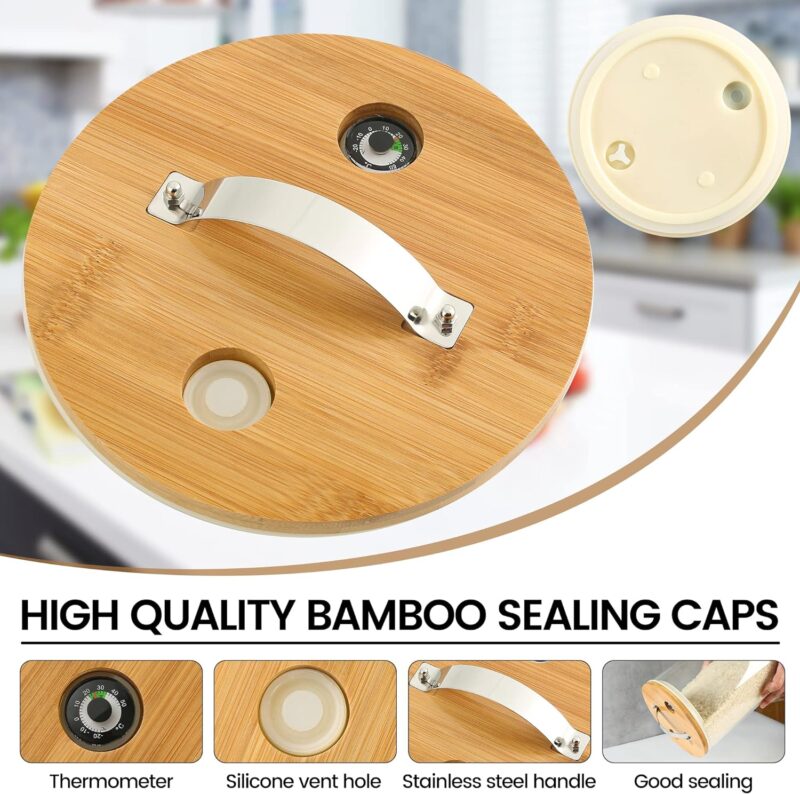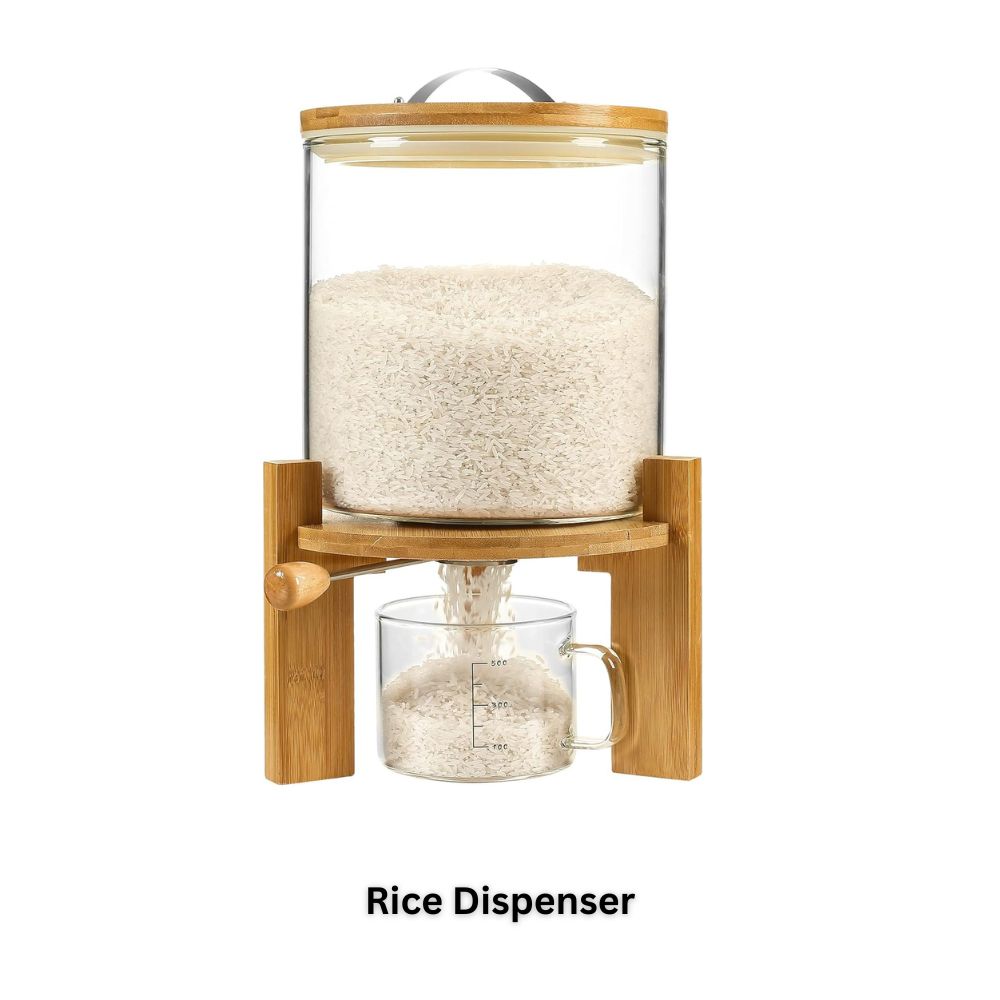Table of Contents
Rice, being a staple food in many households, requires proper storage to maintain its freshness and quality. As the demand for convenience and organization in the kitchen increases, a rice dispenser has become an essential tool for every rice-loving household. In this article, we will explore the benefits of using a rice dispenser, its different types, and how to choose the perfect one for your needs.
1. Introduction
In today’s fast-paced world, convenience is key when it comes to everyday tasks, including cooking. A rice dispenser offers a simple and efficient way to store and dispense rice without the hassle of dealing with messy bags or containers. With its airtight seal and portion control mechanism, a rice dispenser ensures that your rice stays fresh and you have just the right amount every time you need it.
2. Benefits of a Rice Dispenser

Convenience and Ease of Use
One of the primary advantages of a rice dispenser is the convenience it brings to your kitchen. With a simple push of a lever or the press of a button, you can dispense the desired amount of rice directly into your measuring cup or rice cooker. This eliminates the need for scooping rice from bags or containers, minimizing mess and saving time.
Airtight Storage
Rice dispensers are designed to provide airtight storage for your rice, protecting it from moisture, pests, and contaminants. The airtight seal helps to maintain the freshness and quality of the rice, ensuring that it stays fluffy and flavorful for a longer period.
Portion Control
Overconsumption of rice can be a common problem, especially when cooking for smaller households. A rice dispenser allows you to control the portion size by dispensing a predetermined amount of rice with each use. This helps in reducing food waste and promotes healthier eating habits.
3. Types of Rice Dispensers
There are several types of rice dispensers available in the market, each offering its unique features and benefits. Let’s take a closer look at the three most common types:
Gravity-Fed Dispensers
Gravity-fed rice dispensers rely on the force of gravity to dispense rice. They typically consist of a container with a lever or button mechanism that controls the flow of rice. These dispensers are easy to use and require minimal maintenance. They are suitable for both home and commercial use.
Electric Dispensers
Electric rice dispensers operate with the help of a motorized mechanism that dispenses rice at the touch of a button. These dispensers often come with additional features such as programmable portion control and a digital display. Electric dispensers are ideal for those who want more precise control over the amount of rice they dispense.
Wall-Mounted Dispensers
Wall-mounted rice dispensers are designed to save space on your kitchen countertop. These dispensers can be mounted on the wall, freeing up valuable counter space. They offer the same convenience and functionality as gravity-fed or electric dispensers but are best suited for kitchens with limited space.
4. Factors to Consider When Choosing a Rice Dispenser

When selecting a rice dispenser, it’s essential to consider the following factors to ensure you choose the right one for your needs:
Capacity
The capacity of the rice dispenser determines how much rice it can hold at a time. Consider the size of your household and how frequently you consume rice to determine the appropriate capacity. Smaller households may opt for dispensers with a capacity of 5-10 kg, while larger families may require a dispenser with a capacity of 10-20 kg or more.
Material
Rice dispensers are commonly made from materials such as plastic, stainless steel, or glass. Each material has its advantages and considerations. Plastic dispensers are lightweight and affordable but may not be as durable as stainless steel or glass. Stainless steel dispensers are sturdy and resistant to rust, while glass dispensers offer an elegant and transparent storage solution.
Design and Aesthetics
Consider the design and aesthetics of the rice dispenser to ensure it complements your kitchen decor. Look for a dispenser that matches your style preferences and fits seamlessly into your kitchen space. Some dispensers come with additional features like a wooden stand or decorative elements that add a touch of elegance to your kitchen.
Price
Price is an important consideration when choosing a rice dispenser. Set a budget, and compare different options within your price range. Remember to consider the quality and durability of the dispenser along with its price to make an informed decision.
5. How to Use and Maintain a Rice Dispenser

Using and maintaining a rice dispenser is relatively simple. Follow these steps to ensure optimal performance and longevity:
Filling the Dispenser
- Open the lid or access point of the rice dispenser.
- Pour the desired amount of rice into the dispenser, ensuring not to exceed its maximum capacity.
- Close the lid or access point securely, ensuring an airtight seal.
Dispensing Rice
- Determine the amount of rice you need for your recipe or meal.
- Use the dispenser’s mechanism (lever, button, or motorized system) to dispense the desired amount of rice.
- Direct the rice into your measuring cup or rice cooker.
Cleaning and Maintenance
Regular cleaning and maintenance are crucial to keep your rice dispenser in optimal condition. Follow these steps:
- Empty any remaining rice from the dispenser.
- Wash the dispenser with warm, soapy water, using a soft sponge or cloth.
- Rinse thoroughly to remove any soap residue.
- Dry the dispenser completely before refilling it with rice.
- Clean the dispenser at regular intervals to prevent the buildup of rice particles or mold.
6. Other Uses for Rice Dispensers
Rice dispensers are not limited to storing and dispensing rice alone. Here are a few alternative uses for your rice dispenser:
Storage for Flour and Cereal
Rice dispensers can also be used to store other dry ingredients such as flour and cereal. The airtight seal helps to maintain the freshness and quality of these ingredients, ensuring they remain free from moisture and pests.
Glass Food Storage Container
Some rice dispensers are made of glass, offering a transparent storage solution for various food items. These glass containers can be used to store snacks, nuts, or other pantry staples, providing easy visibility and accessibility.
7. Where to Buy a Rice Dispenser
Rice dispensers can be purchased from various retailers, both online and offline. Here are a few popular options:
Online Retailers
- Amazon
- Walmart
- eBay
8. Rice Dispenser vs. Traditional Rice Storage Methods
While traditional rice storage methods like plastic bags or rice cooker storage may be common, they lack the convenience and organization offered by rice dispensers.
Plastic Bags
Storing rice in plastic bags can be messy and inconvenient. The bags are prone to tearing, and it can be challenging to maintain an airtight seal. Additionally, plastic bags are not the most visually appealing storage option.
Rice Cooker Storage
While some rice cookers come with built-in storage compartments, they may not provide an airtight seal or portion control mechanism. Rice dispensers offer a dedicated storage solution that keeps your rice fresh and allows for easy portioning.
Bulk Storage Containers
Bulk storage containers are suitable for storing large quantities of rice but may lack the convenience and portion control features of a rice dispenser. Dispensers provide a more organized and efficient way to store and use rice on a daily basis.
9. Frequently Asked Questions (FAQs)
- Can a rice dispenser keep insects and pests away from my rice? Yes, rice dispensers with an airtight seal are effective in keeping insects and pests out of your rice, ensuring its quality and freshness.
- Can I store different types of rice in the same dispenser? Yes, you can store different types of rice in the same dispenser. However, ensure that the dispenser is thoroughly cleaned between different types of rice to prevent cross-contamination.
- Can I use a rice dispenser for other grains or legumes? While rice dispensers are primarily designed for rice, they can also be used to store other grains and legumes, provided they have similar storage requirements.
10. Conclusion
A rice dispenser is a valuable addition to any kitchen, offering convenience, organization, and freshness to your rice storage. With its airtight seal, portion control mechanism, and various types to choose from, a rice dispenser simplifies the process of storing and dispensing rice. Whether you opt for a gravity-fed dispenser, an electric dispenser, or a wall-mounted dispenser, you can enjoy the benefits of easy access to fresh rice every time you cook. Upgrade your rice storage solution today and experience the convenience that a rice dispenser brings to your kitchen.

